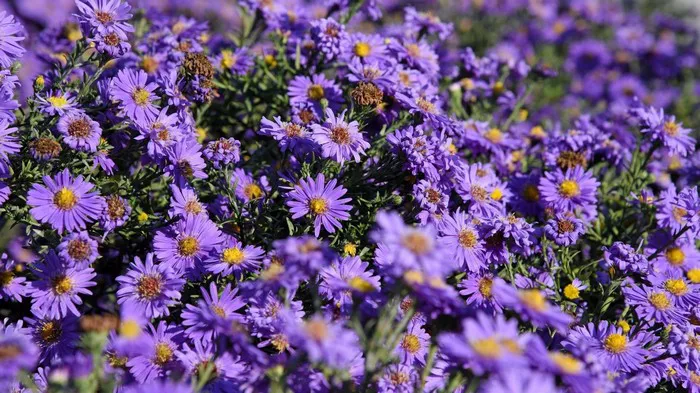Flowers have long been revered for their symbolic significance, representing a multitude of emotions, virtues, and cultural meanings. Among these floral ambassadors, the aster flower stands out for its elegance, diversity, and rich symbolism. Delving into the depths of its significance unveils a story woven with layers of history, mythology, and cultural interpretations. In this comprehensive exploration, we embark on a journey to unravel the mysteries behind the aster flower and decipher its profound symbolism.
Historical Roots and Cultural Significance
The aster flower traces its roots back to ancient times, where it held deep cultural significance among various civilizations. In Greek mythology, the aster was believed to have emerged from the tears of the Greek goddess Astraea, symbolizing purity and innocence. Its star-like shape earned it the name “aster,” derived from the Greek word for star.
Throughout history, the aster has been revered by different cultures around the world. In China, it symbolizes fidelity, elegance, and longevity, often featured in traditional artwork and poetry. Native American tribes saw the aster as a symbol of love and patience, with some tribes using it in medicinal practices.
Botanical Characteristics and Varieties
Botanically known as Asteraceae, the aster belongs to one of the largest families of flowering plants, boasting over 600 species. These resilient flowers come in a variety of colors, including shades of purple, blue, pink, and white, adding to their allure and versatility. Common varieties include the New England aster, Michaelmas daisy, and China aster, each with its unique charm and symbolism.
The aster’s star-shaped blooms, typically composed of numerous tiny petals surrounding a vibrant center, evoke a sense of celestial beauty. Its delicate appearance belies its hardiness, as asters are known for their ability to thrive in diverse environments, symbolizing resilience and adaptability.
Symbolism and Meanings
The aster flower carries a plethora of symbolic meanings, each deeply rooted in cultural beliefs and personal interpretations. One of its primary associations is with love and affection, making it a popular choice for expressing romantic sentiments in floral arrangements. Its vibrant colors and delicate petals convey feelings of admiration, devotion, and emotional depth.
Beyond matters of the heart, the aster also embodies qualities of patience, elegance, and refinement. Its graceful demeanor and enduring beauty serve as a reminder of life’s transient nature and the importance of savoring each moment. In Victorian flower language, asters were often used to convey messages of patience, daintiness, and charm, making them a beloved choice for expressing sentiments in a discreet manner.
In addition to its associations with love and patience, the aster is also linked to themes of healing and protection. In traditional herbal medicine, aster extracts were used to alleviate various ailments, earning it the reputation of a healing flower. Moreover, some cultures believe that asters possess magical properties, serving as talismans to ward off negative energies and bring good fortune.
Cultural Significance and Traditions
The aster’s symbolic significance is further amplified by its presence in cultural traditions and rituals around the world. In Japan, the aster is celebrated during the Festival of the Star, or Tanabata, where it is displayed alongside other symbolic plants to commemorate the meeting of two celestial lovers, Orihime and Hikoboshi.
Similarly, in Europe, asters are often associated with the feast day of St. Michael the Archangel, also known as Michaelmas. Legend has it that asters bloomed where the tears of St. Michael fell, symbolizing protection and guidance. To this day, Michaelmas daisies, a type of aster, are prominently featured in Michaelmas celebrations across Europe.
Moreover, asters hold special significance in the language of flowers, where each bloom carries a specific message or sentiment. Whether presented as a token of affection, a symbol of healing, or a gesture of protection, the aster continues to play a meaningful role in various cultural customs and ceremonies.
Modern Interpretations and Applications
In contemporary society, the aster remains a beloved flower with enduring appeal, cherished for its beauty, versatility, and profound symbolism. Its star-like blooms adorn gardens, floral arrangements, and special occasions, adding a touch of elegance and sophistication to any setting.
Moreover, the aster’s symbolic significance extends beyond personal expressions of love and admiration. In environmental and conservation efforts, the aster serves as a reminder of the importance of preserving biodiversity and protecting fragile ecosystems. As a resilient flower that thrives in diverse environments, the aster inspires hope and resilience in the face of environmental challenges.
Furthermore, the aster’s association with healing and protection continues to resonate in modern contexts. From holistic wellness practices to spiritual rituals, asters are revered for their soothing properties and positive energy, serving as reminders of the interconnectedness of mind, body, and spirit.
Conclusion
In conclusion, the aster flower stands as a testament to the enduring power of symbolism and the profound connections forged between humanity and the natural world. From its ancient origins to its modern-day interpretations, the aster captivates hearts and minds with its beauty, resilience, and rich tapestry of meanings.
As we unravel the mysteries of the aster flower, we uncover a story steeped in history, mythology, and cultural significance. Whether as a symbol of love, patience, healing, or protection, the aster continues to inspire and enchant, serving as a timeless reminder of life’s beauty and complexity.
So the next time you encounter the delicate blooms of an aster, take a moment to reflect on the deeper meanings they carry and the profound connections they forge across time and space. For in the language of flowers, the aster speaks volumes, weaving a narrative of love, hope, and enduring grace.


